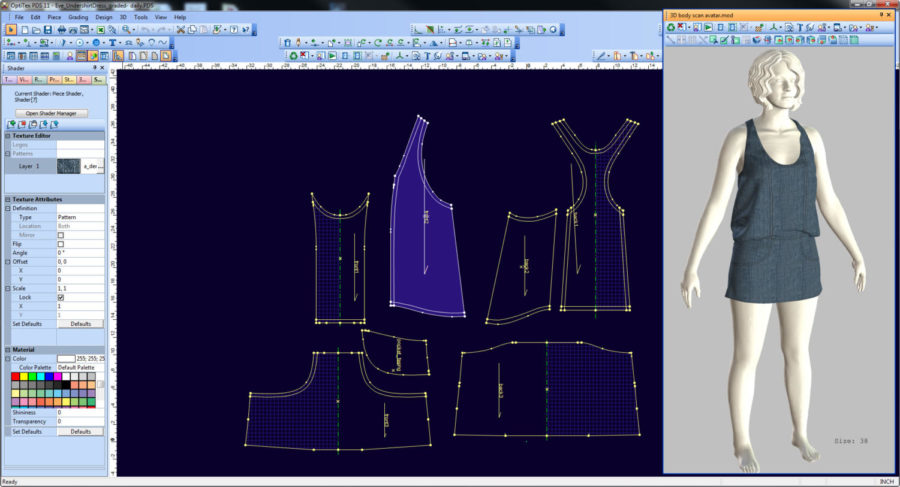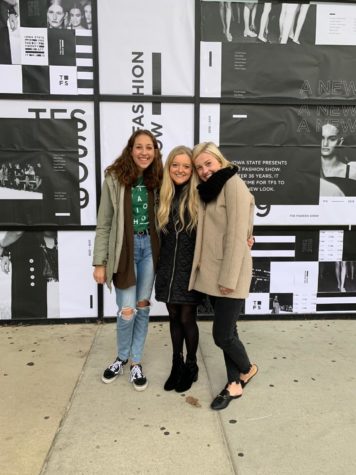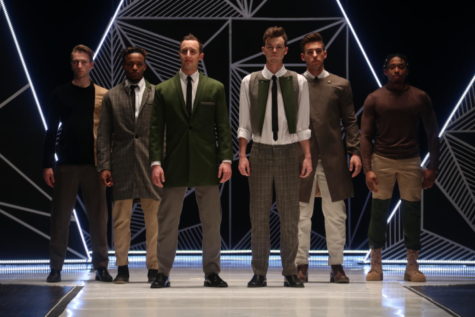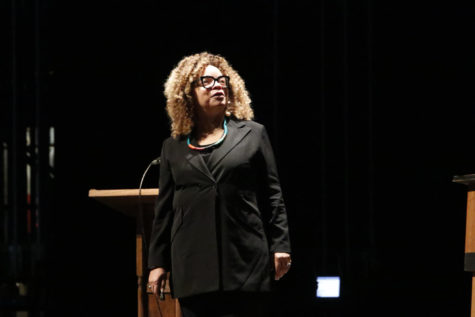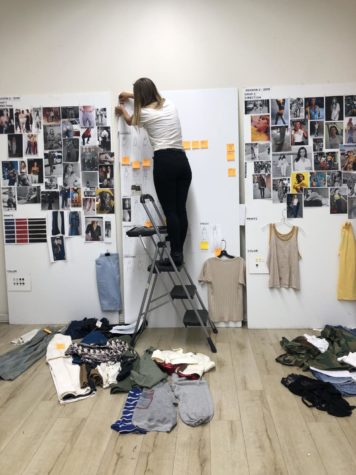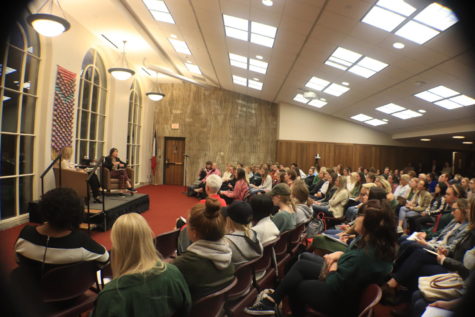New apparel course to teach students about emerging industry technology
November 19, 2013
Iowa State’s apparel, merchandising and design program allows students to work with different materials and technologies they might be unable to work with elsewhere, including the [TC]2 NX-16 3D body scanner and virtual try-on and digital printing software.
“It is important for our graduates to learn this software,” said Fatma Baytar, assistant professor in apparel, events and hospitality management. “They will be well-qualified.”
A seminar class, Computer Aided Design (CAD) Pattern Making, will be offered next semester to expose undergraduate students to new technologies in the apparel industry.
“Professor Eulanda Sanders is going to teach this class but I’ll be a guest lecturer and teaching the 3-D portion of the software,” Baytar said.
Sanders, professor in apparel, events and hospitality management, said that the main focus of this new course will be for students to learn how to use the computerized Optitex Pattern-Making Software through classroom demonstrations.
“Students will also be introduced to 3-D body scanning and how to create a 3-D model or avatar for creating garment patterns and analyzing garment fit prior to making a physical garment,” Sanders said.
Through this course, Sanders said, students will develop proficiency in skills important to the apparel industry, such as CAD pattern making, pattern grading, maker making, 3-D body scanning and 3-D virtual fitting using the Optitex computer software.
Emma Lubben, sophomore in apparel, merchandising, and design, said she used the body scanner for her pattern-making class.
“You walk into a small dark cylindrical room and the curtain shuts. From there an automated voice gives you instructions to stand where the feet indicators are and tells you that there will be a series of lights flashing around you. The lights flash numerous times and range in color basically scanning your entire body,” Lubben said.
Before entering the body scanner, students are asked to wear tight-fitting garments in order to get the most accurate measurements.
“Then I exited and my measurements were recorded on the computer, along with an image of my body in 3-D form,” Lubben said. “It was really cool and really accurate, especially seeing the 3-D form of myself.”
Students are not only able to use the computer software and body scanner during class, but also outside of class whenever they need to.
The computers in LeBaron Hall are all equipped with the necessary software, and students have the ability to use the body scanner for their own projects with the permission of a professor in the department.
Baytar said she believes this technology will grow in the coming years and could possibly be useful in the homes of customers.
Some websites are already using measurements of their customers to create avatars, so the customer can see how different garments will fit their body type.
Baytar said she has worked with emerging digital technologies since she was in graduate school at Cornell University. She teaches various courses at Iowa State, as well as completing a wide range of research.
Since receiving the body scanner in 2008, which is located in LeBaron Hall, the machine has been used for both class projects and research. Baytar has worked with the body scanner as a graduate student and continues to do research as an assistant professor.
“As a graduate student I was at Cornell and I worked in various research projects that required using the body scanner,” Baytar said. “I was using the body scanner for scanning firefighters in different gear, to see how the clothing was fitting to their bodies.”
Baytar also worked with women who had undergone mastectomy surgery.
“We were trying to figure out how bodies change so we can work on designing garments specifically for women who had this operation,” Baytar said.
As an assistant professor, Baytar said she is more interested in virtual prototyping and how professors can teach it to the students at Iowa State.
“Right now, our students learn the CAD program, a 2-D software,” Baytar said. “It’s important for them to understand how this can be converted to 3D.”
Both graduate students and undergraduate students work with the Optitex Pattern-Making Software after they scan their model in the body scanner.
“What we do is we basically collect surface information and our purpose is to create body models so it is not so intrusive,” Baytar said. “It’s very quick; it takes just a couple of seconds.”
The measurements received from the body scanner can be transferred into garment patterns in pattern-making software. Many companies use the body scanner and pattern-making software to create their garments.
“Each company has target customers,” Baytar said. “They know the body measurements of their target customers.”
When students graduate and go on to these companies, Baytar said students are knowledgeable of this software and are able to scan their target customers and use them as fit models. They can prototype these garments in a digital environment before they actually make the garment.
“For production, it usually takes two to ten prototypes before actually sending it to production and it can be very costly,” Baytar said. “In addition to measurements, they can also see the body form and they can see if their garment they are creating and see if it is going to fit their customers in general.”
Baytar said she believes this process of creating prototypes is a very sustainable way to create garments.
“You save materials, you save time and energy,” Baytar said.
Baytar also said she thinks more and more companies will begin to use this software and soon it will be available for at-home use.
“You can get your body scanned and use your avatar for online shopping,” Baytar said. “This software has many facets and I do believe it is not too far away.”

